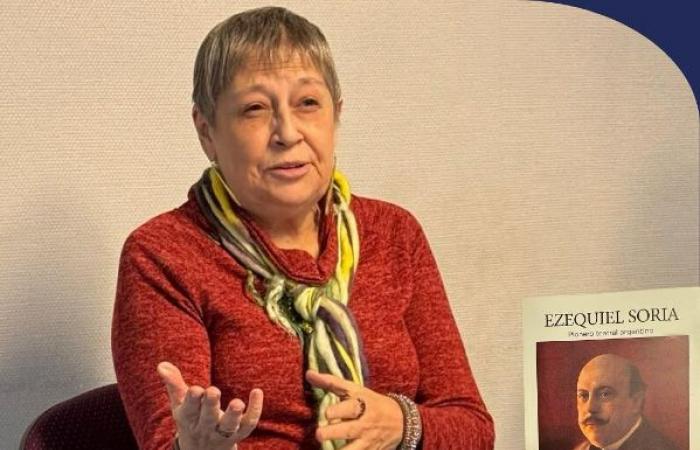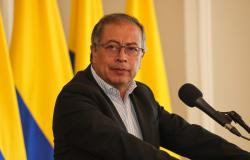The Catamarca native Gabriela Borgna presents her studio dedicated to her countryman Ezequiel Soria in La Sodería. Recognition.
If yesterday a book on contemporary drama written by women was presented in the province, today is the turn of history. The journalist and researcher from Catamarca Gabriela Borgna will arrive at 7 p.m. at La Sodería (Juan Posse 1,141) with her work “Ezequiel Soria – Argentine theatrical pioneer”, where she will be accompanied by Marina Rosenzvaig.
The author was born in Catamarca in 1873 and died in the Federal Capital in 1936, and a room in the Catamarca Theater bears his name, although his recognition is still under construction, to which this work contributes. “The lack of knowledge about him refers both to an integral debt on the dramaturgy of my province and to the fact that all of his work was written abroad. Now deceased, a study appeared Ismael Moya and, many years later, another of Juan Oscar Ponferrada, who always rescued him. It is necessary to point out the discredit into which the first national authors and aesthetics such as sainete had fallen, considered as minor forms or of little significance by the academic world. We also support the hypothesis together with Jose Ariza that his critical political outlook earned him more detractors than followers,” says Borgna.
-Why do you define him as an Argentine theater pioneer?
– He is in more ways than one: he is the one who taught how to act. Pepe, Jerome and Pablo Podesta when they jumped from the riding arena to the theater room; He successively managed his three companies when they separated, making him the first manager in the transition from the 19th to the 20th century; The first part of his dramaturgy addresses political and social episodes in Catamarca and in his text “Justicia criolla” from 1897, he performs and dances a tango on stage for the first time. He was co-founder of the first theater academy in the country with the first national theater manifesto and example of a non-state cultural policy. He was also a screenwriter of Argentine silent cinema, and the first to use it as a tool to publicize his productions. He supported the actors’ strike and was co-founder of the Society of Dramatic and Lyric Authors (currently Argentores), which he directed for two terms.
A surname that refers to the origin of the national theater
-How would you define your work?
– There is no single definition of its dramaturgy because it changes style but not themes, to the same extent that the performing arts of the Río de la Plata evolve and the social composition of its spectators changes. He wrote and directed his first work, “The Year 92” (whose text I reproduce along with six others), when he was 19 years old and the last ones were for Florencio Parravicini or the company Muiño-AllipiHe addressed Spanish-format zarzuela, musical theater with Creole roots, sainete and comedy.
– Did you address social issues in your dramaturgy?
– For a long time it was considered part of the nativist cycle, but I integrate it into the cycle of creoleness. In his works there is no bucolic look at the rural world; His Creoles are country men with their own political position: they were Montoneros of Felipe Varela that recall the horrors of the War of the Triple Alliance, he cites the border conflicts with Chile over Antofagasta, the railroad scam that would go to the mining area of Catamarca… In his skits he observes the new social subjects of Buenos Aires that It stops being the big village. He portrays carters, washing machines, malevos; and as a comedian he describes the new middle classes that are pretentious and accommodating to the political power in power.
– When talking about the origins of Catamarca theater, we mainly refer to Julio Sánchez Gardel or Ponferrada.
– It is ignored due to ignorance. Sánchez Gardel is Soria’s cousin, he integrates nativism and was not problematic like Soria. Ponferrada won national awards and toured Europe.
– This afternoon you will be awarded a prize by Verónica Pérez Luna. What does it mean?
– In its 15 years of uninterrupted work and within the framework of the annual edition of the Research and Criticism Conference, the Association of Theater Research and Criticism (Aincrit) recognizes national and Latin American theater artists who express a high moment of theatrics in their territories. At the proposal of Sonia Saracho, teacher and former director of the institution, the recognition of Verónica expresses the federal and diverse perspective of our institution. I invite you to visit the virtual documentary collection of www.aincrit.org, our digital window at the service of theater artists from across the continent.






